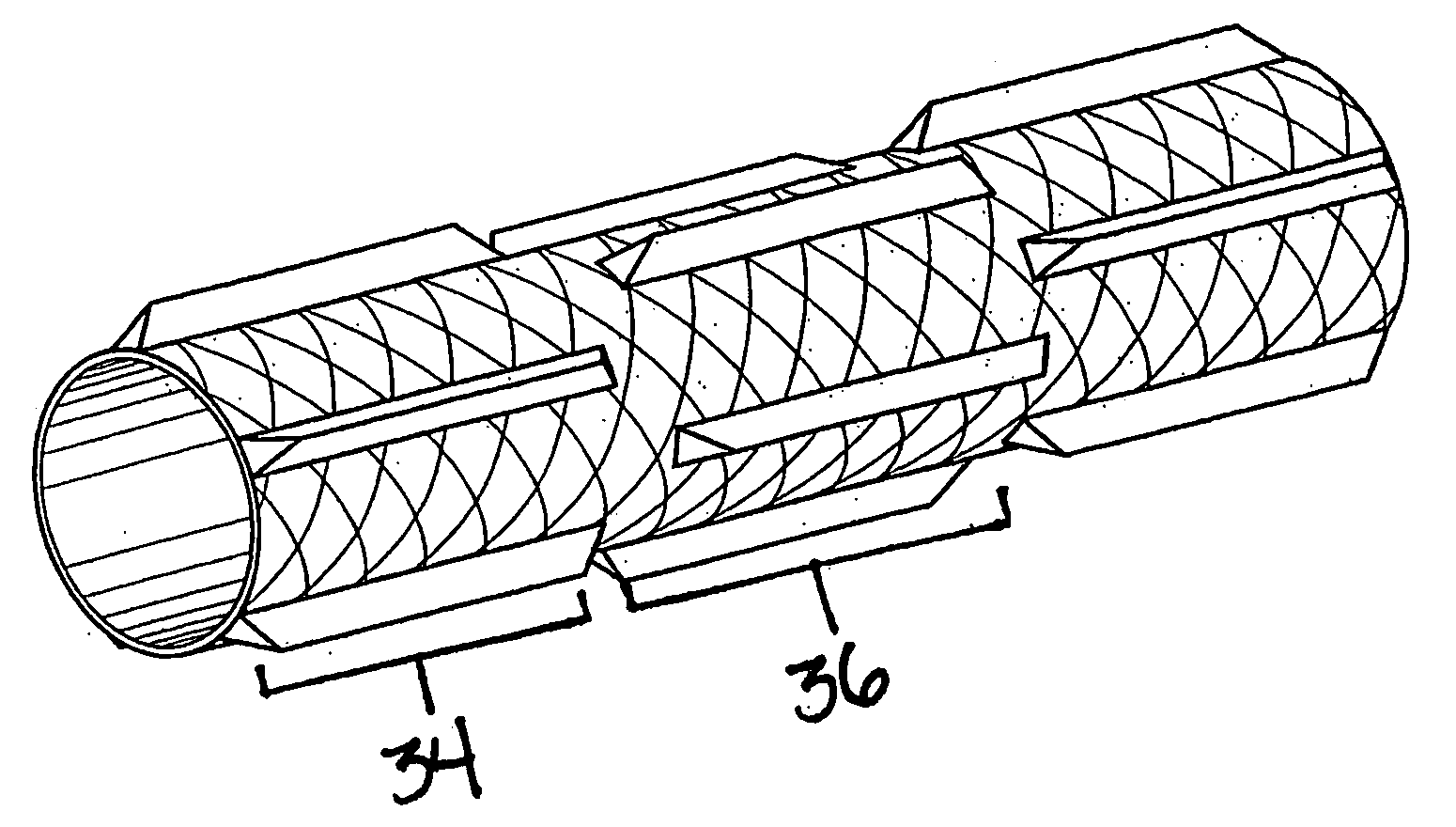Cutting stent
a stent and stent technology, applied in the field of stents, can solve problems such as complications and more serious problems, and achieve the effects of reducing the multi-step process, less steps, and safer and better procedures
- Summary
- Abstract
- Description
- Claims
- Application Information
AI Technical Summary
Benefits of technology
Problems solved by technology
Method used
Image
Examples
Embodiment Construction
[0037] The flat view FIG. 18 consists of the blades integrated with a strut pattern. The strut pattern 40 integrates to the sides of each blade. Each strut 44 has an open ring with an edge, where each edge has an arm extending from the opening edge of the circle. At the end of each arm, another open-end circle joins. The pattern of open-ended circles and arms replicate to form an expandable, flexible pattern that integrates each blade 26. Each subsequent set of staggered blades 36 connects to the previous set of staggered blades 34 by each arm that extends from each open-ended circle to the base of each end of the blade surface 42. At the point of attachment 42, the two arms connect to the base of each blade's beveled edge 46.
[0038] The stent's material is composed of any conventional metals used in conventional stents. The strut design of stent is to the discretion of individual manufactures. However a pattern shown FIG. 18 integrates the blades in a stent pattern. The main embodi...
PUM
 Login to View More
Login to View More Abstract
Description
Claims
Application Information
 Login to View More
Login to View More - R&D
- Intellectual Property
- Life Sciences
- Materials
- Tech Scout
- Unparalleled Data Quality
- Higher Quality Content
- 60% Fewer Hallucinations
Browse by: Latest US Patents, China's latest patents, Technical Efficacy Thesaurus, Application Domain, Technology Topic, Popular Technical Reports.
© 2025 PatSnap. All rights reserved.Legal|Privacy policy|Modern Slavery Act Transparency Statement|Sitemap|About US| Contact US: help@patsnap.com



